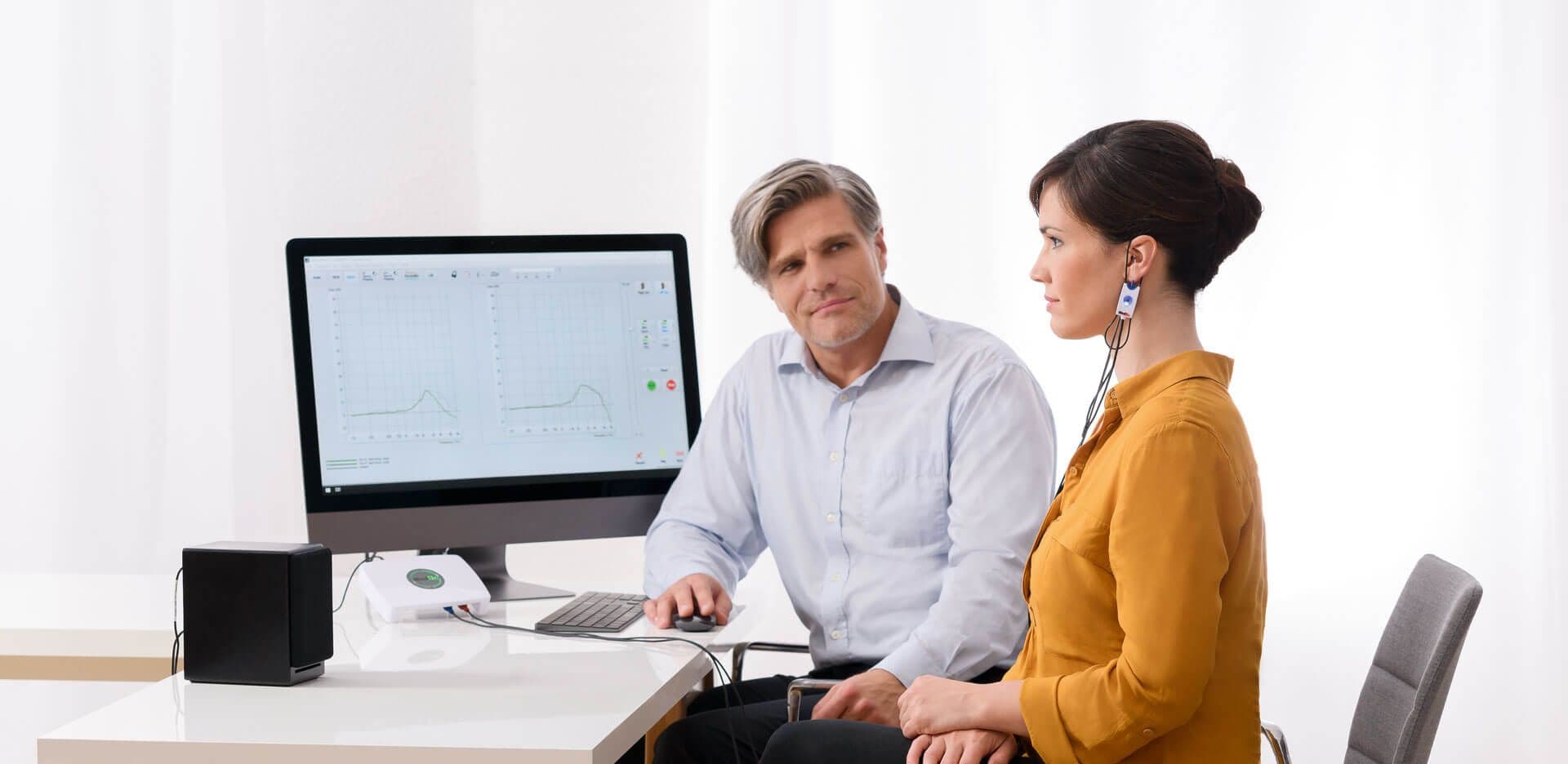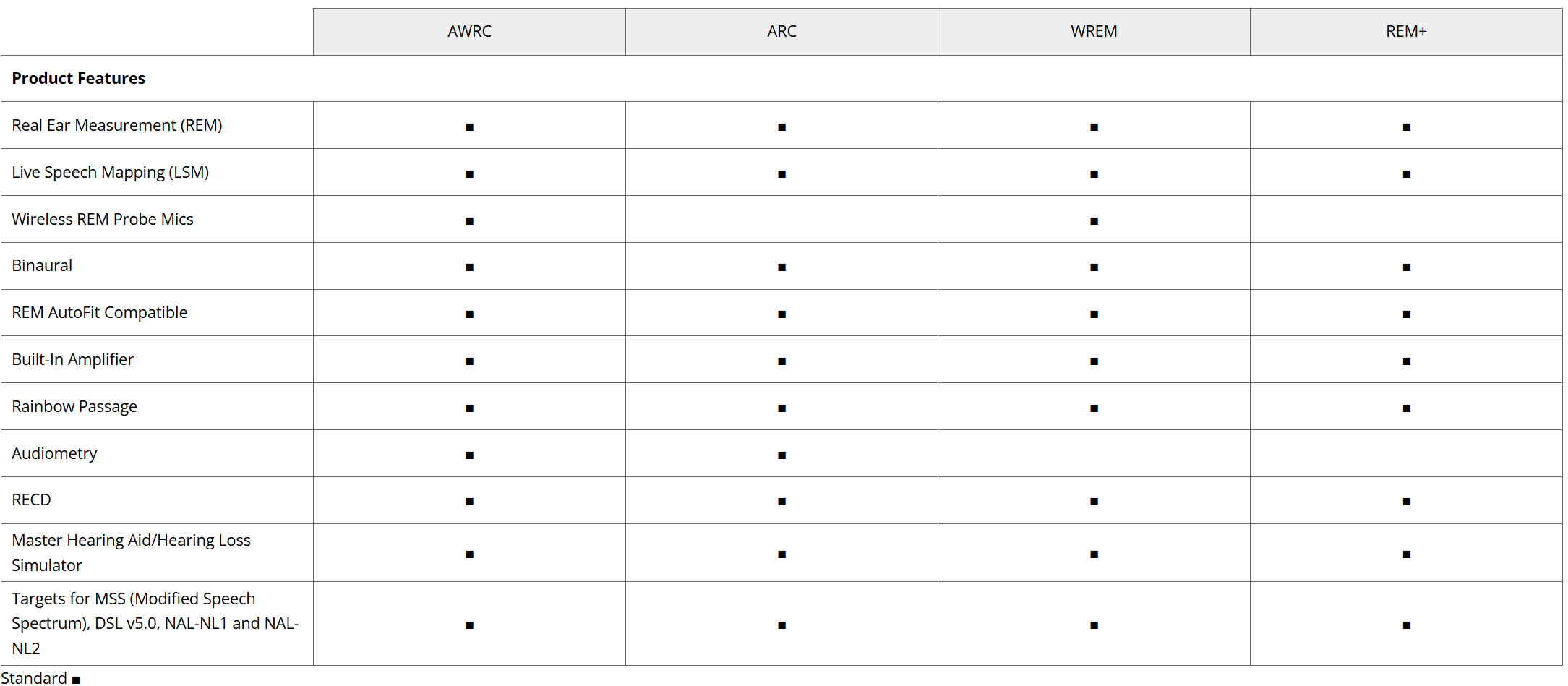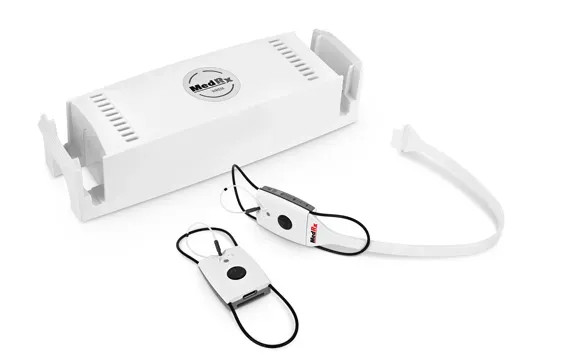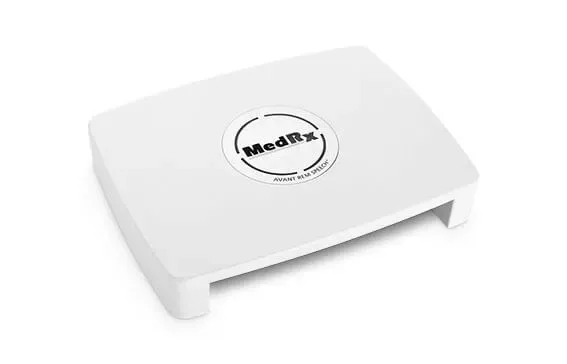MedRx offers 4 Real Ear Measurements and Live Speech Mapping Systems
REM/LSM

Clinical Speech Mapping
Speech Mapping, also known as live speech mapping, is proven to provide extremely accurate verification of what a hearing instrument is actually delivering in amplification to a specific patient’s TM with their reduced dynamic hearing range. It is a true measurement of insitu hearing instrument performance and not based on formulas, averages or predictions.
Why Does Speech Mapping Work?
Probe microphones are sensitive calibrated devices that account for specific anatomical differences in ear canals (length, width, resonance characteristics, TM flaccidity, depth of hearing aid insertion and device sound processing capabilities) to ensure accurate and precise analysis of the prescribed fitting. Speech Mapping utilizes familiar sounds (real speech), not manufactured or artificial stimuli. Speech Mapping eliminates predictive uncertainty of manufacturer recommended “first fit” algorithms or formulas based upon averages. Speech Mapping engages both the patient and the 3rd party in an understandable process, increasing acceptance and acknowledgment of the scope of the loss and the goal of the hearing instrument.
FAQ
What Is a Real Ear Measurement System?
Real ear measurement and live speech mapping (REM/LSM) systems help hearing care professionals (HCPs) fit patients with hearing aids. Testing with real ear equipment ensures that the patient gets the proper amplification from their hearing instrument.
Real ear measurement systems measure the sound output of a hearing aid at the patient’s eardrum, taking the patient’s “real ear” characteristics into account. While REM and LSM are not required tests, it is recommended and can prove extremely beneficial for ensuring patients receive the perfect fit from their hearing aids.
Components of Real Ear Measurement Equipment
REM and LSM systems are computer-based. The equipment comprises several key elements, including the testing hardware, computer software, speaker, and probe microphones.
Placed approximately 3 feet away from the patient’s ears at desk level, an external speaker presents stimuli. Probe tubes at the end of the probe microphone pick up the sound stimuli from within the patient’s ear canal when hearing aids are in. A probe tube is a slender, flexible tube inserted into the patient’s ear to record the sound output the hearing aid is producing at the patient’s ear drum.
The software is where the clinician will work to compare the patient’s prescriptive targets based on the audiogram to the hearing aid’s output. If the output does not match the loss within a small range, they will adjust the hearing aid settings within the software to match the prescriptive output targets. Integrations with hearing aid software allow REM systems to be used in conjunction with several different hearing aid manufacturers.
The testing hardware allows the software, speakers, and probe microphones to communicate and present the testing stimuli and results.
When to Use Hearing Aid Verification Systems
Hearing aid fittings using Real Ear equipment can be performed on older children and adults. Patients are not required to respond during the procedure and must remain quiet for the system to work properly. Because inserting the probe tubes into the patient’s ear can prove uncomfortable for some patients, counseling is recommended to explain the testing process.
Real ear measurement and live speech mapping tests are generally administered in a second appointment following the initial hearing evaluation. Once the provider has determined that a patient has hearing loss and would benefit from a hearing instrument, they will order the hearing aid and schedule a follow-up appointment to fit them.
Who Can Use Real Ear Measurement Devices?
Only trained hearing care professionals should use Real Ear verification devices. Audiologists, ENTs (ear, nose, and throat doctors), hearing aid specialists, and hearing aid dispensers are the most common clinicians conducting hearing aid fittings.
While only a select number of HCPs use REM systems, it is an audiology best practice to perform real ear for every patient fit with a hearing aid. Improper fittings can lead to dissatisfaction and discomfort.
Standards for Hearing Aid Verification Systems
U.S. standards for Real Ear systems are outlined by the American National Standards Institute (ANSI) S3.46. International requirements are listed under the International Electrotechnical Commission (IEC) standard 61669.
Compare Product Features




